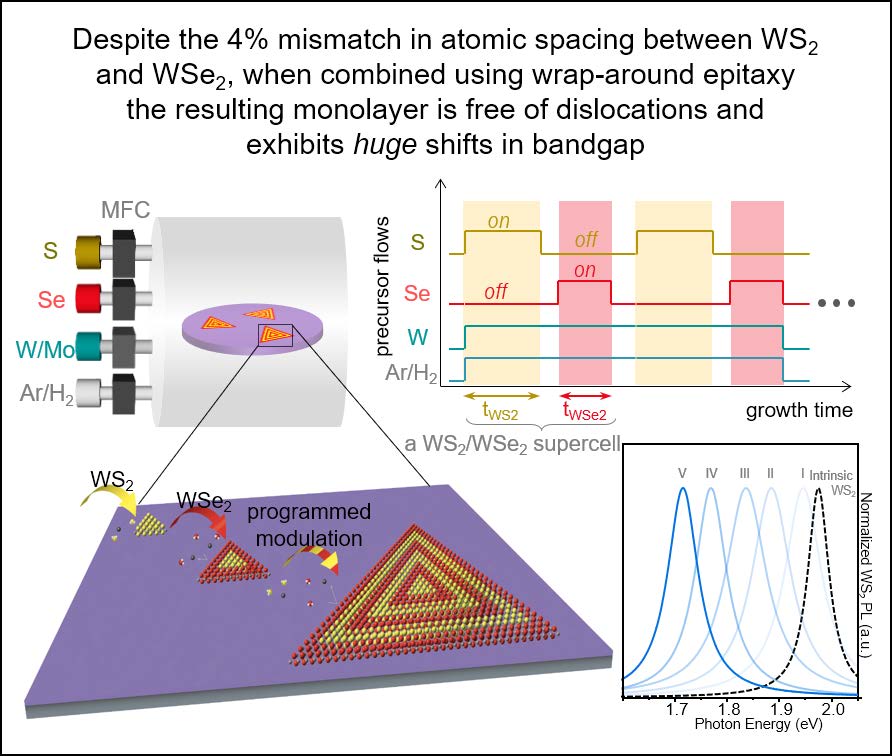PARADIM researchers, Jiwoong Park (University of Chicago) and David Muller (Cornell University)have created superlattice valleytronic materials—still just a single monolayer thick—by modulating the sequence in which the gas precursors are supplied during growth. The resulting two-dimensional (2D) superlattice single crystal differs from conventional superlattices of semiconductor materials in that it is connected in concentric
 |
| Figure 1: Scheme of the modulated metal-organic chemical vapor deposition process used to make super lattices of 2D valleytronic materials. |
rings. Such connection and the larger barrier to dislocation formation in 2D systems makes it possible to combine highly mismatched 2D materials and grow them to thicknesses far beyond conventional limits. Specifically, we demonstrate dislocation-free WS2/WSe2 superlattices that are more than 100×thicker than conventional semiconductor materials with comparable mismatch. At the large strains attainable the optical properties can be tuned dramatically; this approach should apply generally to 2D materials.
Reference: S. Xie et al., Science 359 (2018) 1131–1136.
Technical details:
Epitaxy forms the basis of modern electronics and optoelectronics. We have achieved the coherent growth of superlattices of transition metal dichalcogenides (TMD). In these superlattices different TMD monolayers—despite large lattice mismatches—are repeated and integrated without dislocations in a superlattice that is a single monolayer thick. These superlattices display fully-matched lattice constants across the heterointerfaces while maintaining a surprisingly isotropic lattice structure and triangular symmetry. This strong epitaxial strain is precisely engineered via the nanoscale supercell dimensions, thereby enabling broad tuning of the optical properties and producing photoluminescence peak shifts as large as 250 meV. Such coherent superlattices provide novel building blocks with targeted functionalities at the atomically-thin monolayer limit.
Full Reference: S. Xie, L. Tu, Y. Han, L. Huang, K. Kang, K. U. Lao, P. Poddar, C. Park, D. A. Muller,
R. A. DiStasio Jr., J. Park, Coherent, atomically thin transition-metal dichalcogenide superlattices with engineered strain. Science 359, 1131–1136 (2018).
Return to: In-house Research Highlights







